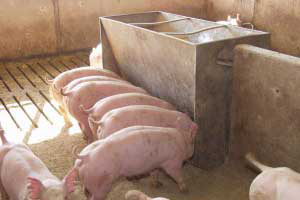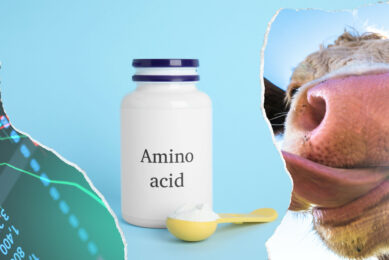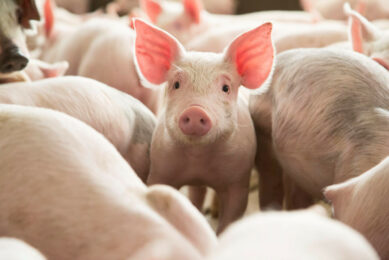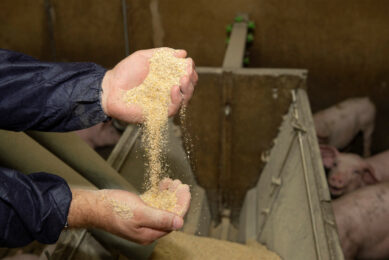Corn germ in swine diets can reduce diet cost

Inclusion of corn germ in swine diets can reduce diet costs, depending on the local cost of corn germ and other ingredients. Recent research conducted at the University of Illinois indicates that corn germ can be included at up to 30% in diets fed to growing pigs.
“In previous research, we had seen that pigs do very well on diets containing 10 percent corn germ, so we wanted to investigate if higher inclusion rates can be used,” said Hans Stein, professor of animal sciences at Illinois.
The corn germ used in this study came from the ethanol, or dry grind, industry, and contained 16 to 18 percent fat. This product is different from the corn germ produced from the wet milling industry, which contains 30 to 40 percent fat.
Stein’s team tested diets containing 0 percent, 10 percent, 20 percent, and 30 percent corn germ. They tested each inclusion level of corn germ in diets containing 30 percent distillers dried grains with solubles (DDGS) as well as in diets containing no DDGS. They found no difference in growth performance, carcass composition, muscle quality, or backfat quality as increasing amounts of corn germ were added to the diets, regardless of the inclusion level of DDGS.
“The results of this work demonstrate that pig growth rate will not be changed by the inclusion of up to 30 percent corn germ in the diets, and feed conversion rate will not be changed,” Stein said.
All diets contained the same amounts of energy, standardized ileal digestible indispensable amino acids, and digestible phosphorus. Fat content was not held constant across diets; the diets containing more corn germ also contained more fat. As a result, the bellies of pigs fed diets with no DDGS were softer as corn germ levels increased.
“Producers may have to reduce the inclusion rate during the final three to four weeks before slaughter,” Stein concluded. There was no effect on belly firmness in pigs fed diets containing DDGS.
Stein said that research on whether reducing the inclusion rate of corn germ in late-finishing diets would ameliorate the negative effects on belly quality might be warranted.
The study, “Up to 30 percent corn germ may be included in diets fed to growing–finishing pigs without affecting pig growth performance, carcass composition, or pork fat quality,” was published in the Journal of Animal Science and was co-authored with Jung Wook Lee, a Master’s student in the Stein Monogastric Nutrition Laboratory at Illinois, and Floyd McKeith, professor of animal sciences at Illinois. The manuscript is available, click here.
Source: University of Illinois












